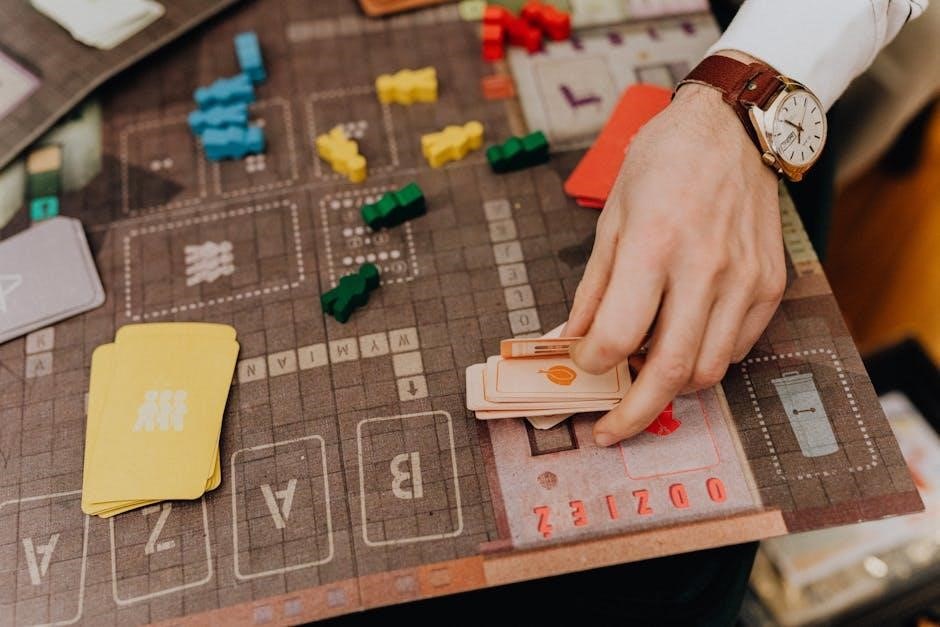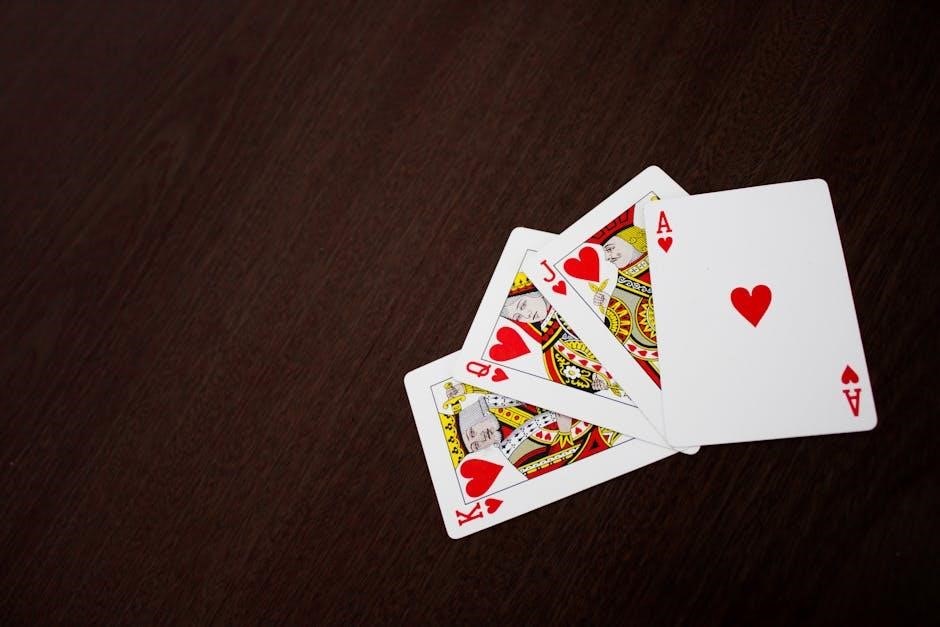
Card games have long been a popular form of entertainment, offering a unique combination of strategy, luck, and social interaction. With countless variations available, understanding the rules is essential to enjoying these games fully. Whether you’re a seasoned player or a beginner, familiarizing yourself with the basic principles and variations of card games can enhance your experience.
Most card games begin with a standard deck of 52 cards, though some variations may use fewer or additional cards, such as jokers. The deck is typically shuffled at the start of the game to ensure randomness. Players then receive a specific number of cards, depending on the game’s rules. For example, in games like “Go Fish!” or “Switch,” each player is dealt a hand of cards, while in others, such as “Beggar My Neighbour,” the entire deck is divided equally among participants.

The objective of most card games is to be the first to eliminate all your cards or to accumulate the highest score. Certain cards may have special actions, such as the “SKIP” card in some games, which forces the next player to lose their turn. Other games, like “Mistigri,” feature unique mechanics where avoiding a specific card is key to winning. These variations add layers of complexity and excitement to the gameplay.

One of the most appealing aspects of card games is their accessibility. Many games, such as “Go Fish!” or “Slapjack,” are simple enough for children to learn, while others, like “Gundam Card Game” or “Sequence,” require more strategic thinking and are enjoyed by adults. The rules of these games are often straightforward but allow for depth and creativity as players gain experience.
For those new to card games, starting with simple rules and gradually incorporating more complex elements is a great way to build confidence. For example, in “Go Fish!,” players begin by matching sets of cards, while in “Switch,” the goal is to play cards in numerical or color sequence. As players become more comfortable, they can explore advanced strategies and variations;
Card games also provide an excellent opportunity for social bonding. Whether played with family, friends, or online communities, they foster camaraderie and healthy competition. The portability of card games makes them a versatile option for entertainment, suitable for both casual gatherings and organized tournaments.

General Rules of Card Games
Card games are a beloved pastime for many, offering entertainment, social interaction, and mental stimulation. While there are countless variations, most card games share a set of general rules that provide structure and ensure fair play. Understanding these rules is essential for enjoying the game and improving your skills. Below, we explore the common principles that govern most card games.
Setup and Shuffling
The game begins with preparing the deck. A standard deck consists of 52 cards, divided into four suits: hearts, diamonds, clubs, and spades. Each suit contains 13 cards: numbers 2 through 10, and the face cards—Jack, Queen, King, and Ace. Some games may include additional cards, such as jokers, which can serve as wild cards or perform special functions. Before the game starts, the deck is typically shuffled to randomize the order of the cards. Shuffling ensures that the distribution of cards is fair and unpredictable, adding an element of chance to the game.
After shuffling, the deck is usually cut by one of the players to ensure the shuffle’s integrity. Cutting involves dividing the deck into two parts and then combining them to create a new order. This step is optional in casual games but is often performed in more formal settings to maintain fairness.

Dealing the Cards
Once the deck is prepared, the cards are dealt to the players. The number of cards each player receives depends on the specific game being played. For example, in “Go Fish!” each player is dealt six cards, while in “Switch,” seven cards are given to each participant. The remaining cards are placed face down in the center of the playing area to form the draw pile. This pile serves as the reservoir of cards that players can draw from during the game.

In some games, the dealer—usually the player who shuffles and deals the cards—may have specific advantages or responsibilities. For instance, in certain variations of poker, the dealer’s position can influence the betting order. Knowing who the dealer is and their role is crucial for understanding the game’s dynamics.

Gameplay Rules
Gameplay in card games generally follows a sequence of turns, with players taking individual actions in a predetermined order. The order is often determined by the seating arrangement, with play proceeding clockwise or counterclockwise around the table. Each player’s turn typically involves drawing a card from the draw pile or playing a card from their hand, depending on the game’s rules.
In many games, players must follow specific rules when playing cards. For example, in games like “Switch” or “Crazy Eights,” players must play a card that matches the current top card’s suit or number. If a player cannot play a card, they may be required to draw a card from the draw pile or perform a penalty action, such as skipping their turn. These rules ensure that the game progresses smoothly and maintains its structure.

Some games also feature mandatory plays, where players must play a card if they can. For example, in “Beggar My Neighbour,” players must play a card if they have one that matches the current card’s suit. Failure to play a card when required can result in penalties or even disqualification from the game.
Special Cards and Their Roles
Special cards are a common feature in many card games, adding unique twists and challenges. These cards may have specific functions or override the standard rules. For example, in “Uno,” the “Wild” and “Wild Draw Four” cards allow players to change the color of play or force the next player to draw additional cards. Similarly, in “Hearts,” the Queen of Spades is a penalty card, and avoiding it is crucial to winning the game.
Jokers are another type of special card, often used as wild cards that can represent any suit or number; The number of jokers in a deck and their specific roles can vary depending on the game. In some games, jokers are not used at all, while in others, they play a central role in the gameplay.
Understanding the roles of special cards is vital for effective gameplay. Players should always familiarize themselves with the specific rules governing these cards before starting the game. Misunderstanding their functions can lead to mistakes and potentially unfair outcomes.
Scoring Systems
Most card games incorporate a scoring system to determine the winner. The scoring rules vary widely depending on the game, but they generally reward players for achieving specific objectives. For example, in “Go Fish!”, players earn points by collecting sets of four cards of the same rank. In “Gin Rummy,” players score points by forming valid sets and runs before their opponent does.
In some games, points are deducted for holding certain cards at the end of the round. For example, in “Hearts,” players receive points for each heart they collect, and the Queen of Spades is worth additional points. The goal is to have the lowest score at the end of the game, making it essential to avoid these penalty cards.
Scoring systems can also be based on the number of tricks won, as in “Spades” or “Bridge.” In these games, players bid on the number of tricks they believe they can win and are rewarded or penalized based on their ability to meet their bid. Accurate bidding and strategic play are crucial for maximizing points in these games.

Winning Conditions
The ultimate goal of most card games is to win by meeting the game’s specific winning conditions; These conditions can vary greatly depending on the game’s rules. For example, in “Poker,” the winner is the player with the highest-ranking hand at the end of the betting round. In “Blackjack,” the goal is to get a hand value closest to 21 without exceeding it, beating the dealer’s hand in the process.

In games like “Solitaire,” the winning condition is to clear the tableau by moving all cards to the foundation piles. In “War,” the winner is the player who collects all